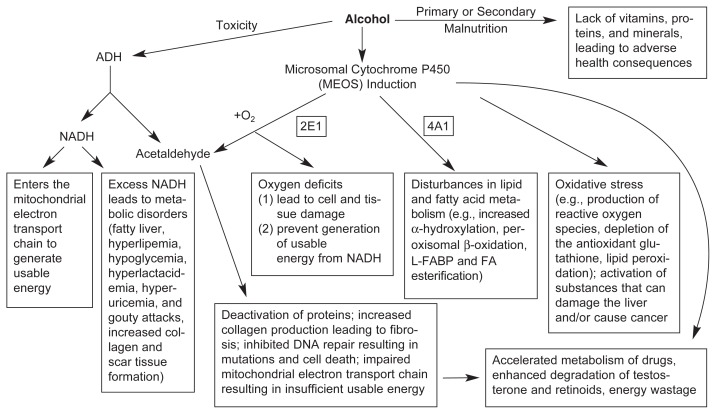Figure 3.
Effects of heavy alcohol consumption caused by alcohol-related malnutrition and alcohol breakdown by the enzyme alcohol dehydrogenase (ADH) and the microsomal ethanol-oxidizing system (MEOS). Alcohol consumption can lead to primary and secondary malnutrition as described in figure 1. Alcohol breakdown by ADH results in the formation of excess levels of the molecule reduced nicotinamide adenine dinucleotide (NADH), which can cause various metabolic problems. Moreover, both ADH and the MEOS convert alcohol to acetaldehyde, a toxic molecule that has numerous adverse effects. Alcohol also enhances the activity of the central enzyme of the MEOS, cytochrome P450 2E1, which exacerbates some of the toxic effects of acetaldehyde and generates a harmful condition called oxidative stress in the cells. Oxidative stress is characterized by excess levels of reactive oxygen species (ROS), abnormal lipid breakdown resulting in additional reactive molecules, and/or reduced levels of antioxidants (e.g., glutathione) which can eliminate reactive molecules.
SOURCE: Modified from Lieber 1998.

